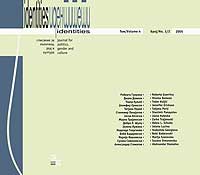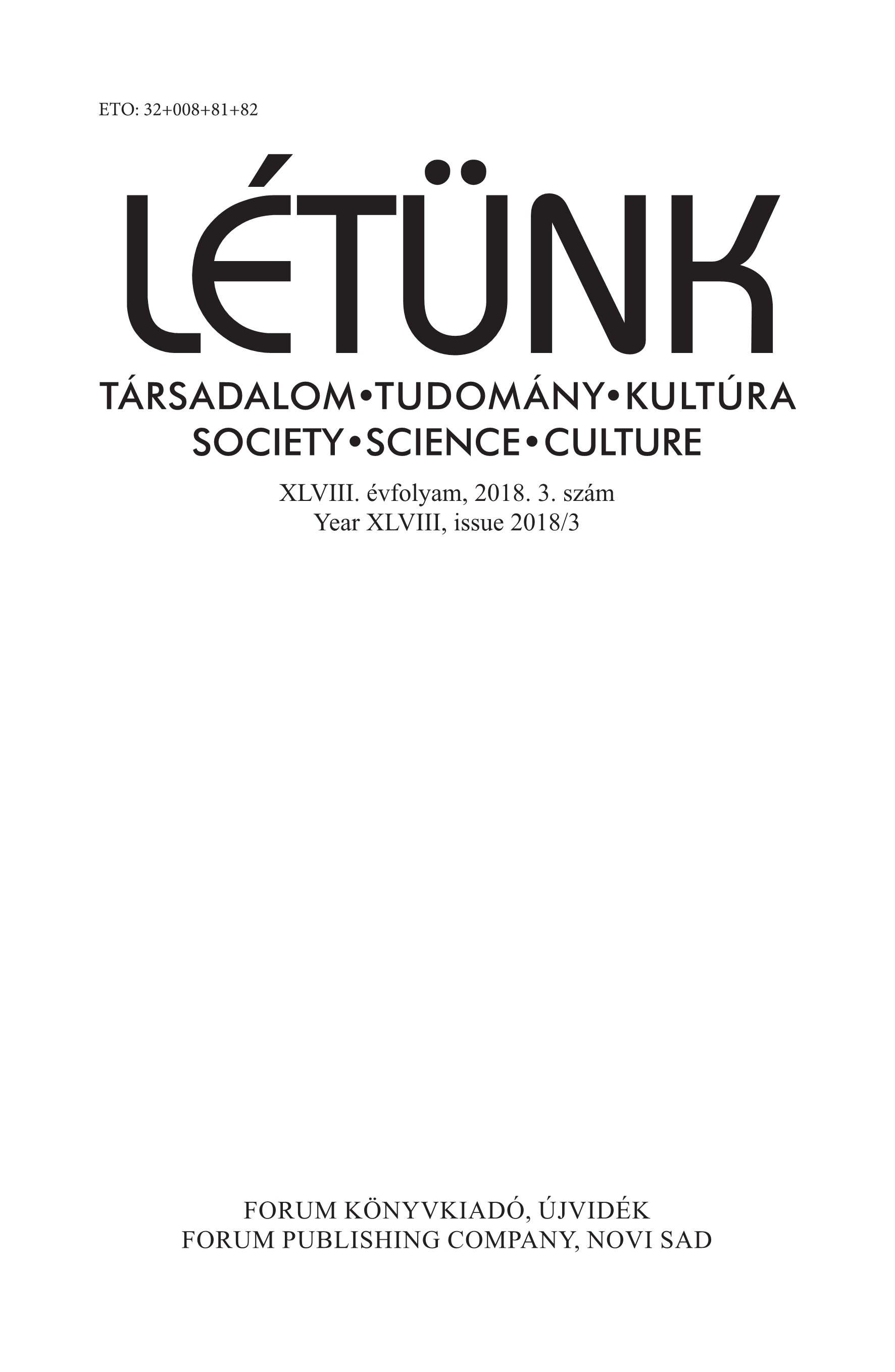
We kindly inform you that, as long as the subject affiliation of our 300.000+ articles is in progress, you might get unsufficient or no results on your third level or second level search. In this case, please broaden your search criteria.


It took seven years for Manchevski to make his second feature film. Some time was obviously required to outgrow a somewhat naive belief in the Balkan evil, emanating from his first film, Before the Rain, and maybe to ponder on what he would need more: a major movie award or his intellectual integrity. In my view, he also needed more time to invent so many new and unseen film images.
More...
Per was the name of a root, very old and very wide: it spread, or so they say, all the way from India to Europe. The traveler Julius Obedient, enchanted by roots, asked it one morning: O root, tell me, what does your name mean? The root answered: to try, to dare, to retaliate. Hypothetical, isn’t it – the traveler replied and continued his traveling so that he can see if what the root said was true. Finally, he met another root, whose name was peira. He turned to the root, asked what its name meant and found out peira is expirience. Then he turned to a different root, whose name was feraz. He learnt that feraz stood for peril, unexpected death.
More...
In the article I put the question whether people with a real sense of responsibility, truly strong political personalities can find a place in modern democratic politics. Following the lead of the classicists of political thought I aim at showing the strong and weaker sides of the democratic system. I come to the conclusion that the very nature of this system – in peaceful times – precludes the possibility of ruling by strong political leaders. These leaders, slow to flatter the demos, are unable to climb to the heights of political power. They appear as politically indolent people.
More...
Order and hierarchy are the basic elements of Medieval thought. The guarantor of social order is an individual at the right place and fulfilling their duties diligently. Ordo is rooted in hierarchy and it means that individuals are put in a particular order of a social ladder expressed in grades (gradus). Everyone should stay at the right place – paraphrasing Saint Augustin – it is a Medieval conditio sine qua non of safety and social order. According to the author, the problem of ordo is formed on two tracks: a status gradation conditioned by the division of labour and as ordo universalis, which means order directly leading to an individual hierarchy created by God.
More...
This paper aims to explore the meanings of the English word “arguing” in folk culture and language in Ukraine. It first considers the various definitions and concepts concerning Ukrainian arguing related words and expressions that can fully or partially represent all the meanings of the English word “arguing.” Next, it is studied within the Ukrainian folk tradition proverbs and tales of debates involving the explanation of the most fundamental orientations and patterns, which could constitute the understanding of arguing and public debating there.
More...
The purpose of this paper is to contribute to further clarifying the characteristics of marine culture in the Northeast of Vietnam from the theory of cultural ecology. The research results of the article will also be a scientific basis to contribute to the study of Vietnam’s sea and islands from the science of culture. In order to carry out this research, the author uses an analytical-synthesis method, which is used to deeply understand the research object, combining a comparative approach to show the similarities and differences between the marine culture of Northeast Sea and some other areas in Vietnam. The author attaches special importance to the practical survey method: participating in cultural activities of residents of some localities in the Northeast Sea of Vietnam (such as Quan Lan Island, Co To Island, Cat Ba Island...), and conducting interviews with people for the purpose of truly describing phenomena related to marine culture. Previous studies in Vietnam only focused on describing the appearance. They stated the values of Vietnamese coastal culture and some localities in the Northeast, but the theory of approach in marine culture research is unclear. This research uses the theoretical framework of cultural ecology to affirm: the people in the Northeastern region of Vietnam with their thinking have created ways to adapt to the natural environment and always creating material and spiritual values that bring about the highest adaptation to nature to benefit their life activities. The research results of this article can be used as a reference for the culture of the islands in the Northeast in particular and the Vietnamese culture in general, including theoretical research on marine culture, as well as the analysis of marine cultural characteristics from cultural ecology theory.
More...
The article deals with the discovery of a performative context of anthropological discourse. This requires a revision of customary discursive codes “nature/culture” and “culture/civilization” as they are built on the false dualism of the spiritual and the material. It reveals itself in discursive erosion of positional places that ruin each other. Shifts that accompany such a state of things reveal an archaic layer of body-spatial experience based on a non-controversial duality. The projections of this experience, through customary discursive codes, discover non-controversial binary pairs. Fundamental for descriptive ontological judgments of culture is an “internal/external” pair. For normative (ethosrelated) judgments of culture, it is a “close/distant” pair. Together, they make a body-spatial logic of connection in the anthropological discourse between the descriptive and normative levels, thus forming in it various human types through anthropological projections. For cultural discourse, the performative context generally reveals itself as anthropological deixis that makes relevant historically diverse language representations of culture.
More...
The first half of the twentieth century is regarded by many experts as the Golden Age of Romanian culture and it is the period when it reaches its maximum level of international affirmation in harmony with European cultural trends. Early twentieth century was a prolific period for Romanian prose and the personalities who worked as novelist were Liviu Rebreanu, Camil Petrescu, Mihail Sadoveanu and many more. During the interwar period, the literary field of modernism and traditionalism were disputed, and intellectual work was appreciated and paid. Social condition of intellectual ensured its appropriate status to its preparation. In the early years of building communist regime have been made every effort to monitorize the spread of literacy of the population and the introduction of free education at all levels. At the same time, repressive policy led to throwing in prisons and physically removing hundreds and thousands of intellectuals in the interwar period. However, in this era there was a strong editorial activity . In order to educate the „popular masses”, a very large number of books have been published widely, books of Romanian authors, as well as in the universal literature. The published books were subjected to censorship and they had in the eyes of the authorities the purpose to promote the values and ideals considered desirable by the communist leadership.
More...
The purpose of this assignement is to rediscover the personality of Dimitrie Gusti, founder of the National Village Museum and of the Romanian Sociological School, a visionary who used the monographic research for the first time in our country, a man who greatly contributed to the Romanian culture and whose vision is still a vivid lesson of life.
More...

The present essay aims at describing the literary motif of wedding in the Romanian literature. Given the complexity of the topic,we selected a few representative titles from the work of Liviu Rebreanu, G. Călinescu, E. Barbu, Mircea Eliade, famous prose writers, and also from romantic poets, such as M. Eminescu and G. Coșbuc. The symbolical meaning of the motif prevails in some works, while the social and personal meaning is emphasized in others. A blend of several levels of significance is often intended.
More...
Traditional gipsy music has been a way of communication between any of communities in which this music existed, no matter the region. That is way the accomplished material proposes to present different aspects of the life of some authentic gipsy musician, their feelings and their way of living bath joyful and sad.
More...

Review of: Jere Paul Surber, Culture and Critique: An Introduction to the Critical Discourses of Cultural Studies, Westview Press, Boulder, 1998.
More...
Review of: Fabrice Midal, Quel bouddhisme pour l’occident? Editions du Seuil, Paris, 2006.
More...
Review on: Szilárd Tibor Tóth, Tartu kirjakeele raamid Johannes Gutslaffi grammatikast (1648) «Kodolaste raamatuni» (1913), Tallinn 2019 (Tallinna Ülikool. Humanitaarteaduste dissertatsioonid 52)
More...
After the devastating Turkish wars in Hungary, in the first quarter of the 18th century to peasants from German states was offered to migrate to the wild areas of South of the Hungarian kingdom, to the so called Schwäbische Türkei (Turkey for Swabian Germans). One group of the inhabitants in villages between the rivers Danube and Tisza, the Roman Catholic village, Hajós was settled from Württenberg. Their language (a unique idiom of Swabish, i. e. Alleman) and geograpical situation made them isolated, and thus developing a very rich peasant culture. Scholars (Mária Schön, Zsuzsanna Bereznai and János Müller) started from 1983, worked on a large ethnographic/folklore project to comprise the traditional lore of the village. Three bulky books (together more than two thousand printed pages) appeared. The first was dedicated to „mentality” of the village people, the second published the best known folk songs, and the third relates about the hardships of the German minority in Hungary from 1938 to 1954. The method of the books is the same: to conduct thousands of interviews, and using all written sources available.Then to make a carefully composed summary of peasant life in Hajós. The books not serve only the folklore textology, but express the self-identity of Hajós village – which is today flourishing again, thanks to the diligant peasants there. Because of the similarity of Bácska villages and their folklore research, the review is dedicated to Anna Szőke, devoted scholar of folklore identity in the Bácska.
More...
Scholarly interest in Ethiopia’s ethnic federalism and political representation of minorities has frequently been on ethno-territorial organization, constitutional design, power-sharing arrangements, but the rights of minority under majority and their decision making power are often left out from analyses. In the current politics of Ethiopia Minorities are not supported well, but they are also sometimes bothered and ignored. These unequal policies have resulted in discrimination of different rights in society. The Constitution of Ethiopia off course provided equality before the law for all citizens regardless of their religion, race, language or gender. At the same time, it declared the value of cultural diversity. However minorities did not have a chance to win in an election since the system of election in Ethiopia is a simple majority, when there is no one particular group which holds numerical dominance, simple majoritarianism can work against the rights of minorities unless they are specifically safeguarded. In addition even though the constitution of the 1995 FDRE provides article in support of minorities representation but it fails to apply practically.
More...
This paper aims at providing an overview of the Banat calendar press products during the interwar period, focusing on the place and duration of the publication on one hand, and on their structural and thematic features, on the other hand. The starting point of the study is an attempt to define this functional type of text by drawing out its characteristics. The article offers an overview of the structure, content and function of the German-language calendars of Banat during the interwar period, with the intention of underlining their peculiarities. The analysis of the calendars has shown that they are a living proof of the way of thinking and acting, but also a reflection of the cultural and linguistic identity of the Banat Swabians of that time.
More...